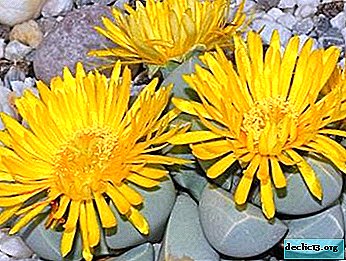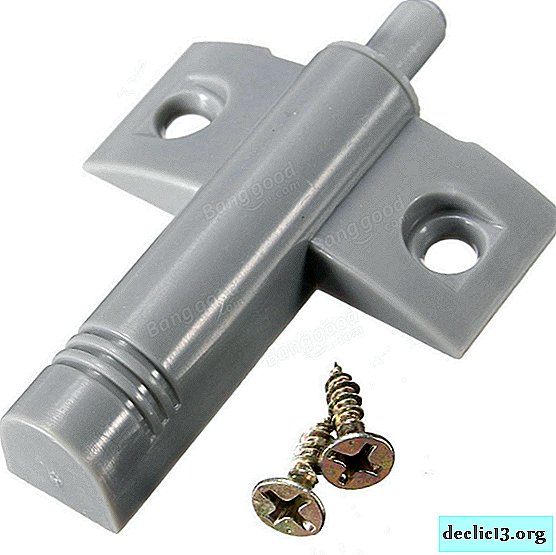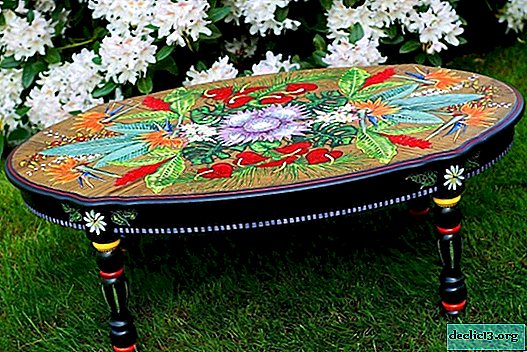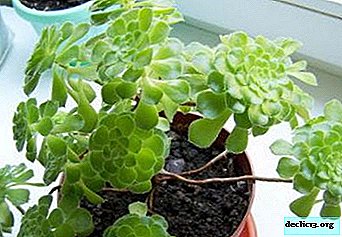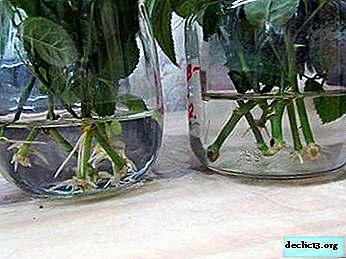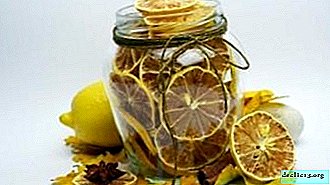What care is needed for an orchid during its flowering and in other periods of life?
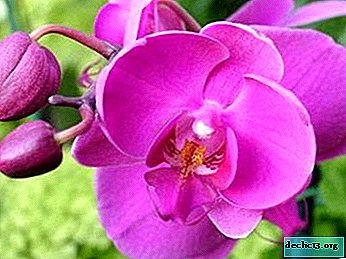
Orchid often appears in our house as a gift - replacing a bouquet. This is an excellent substitute for conventional cut flowers, because it is able to charm for a very long time with its stunning colors and delicate aroma. Of course, the beauty of the Orchid will require a lot of attention and caring (and most importantly - the right) care, so that its magical flowering period lasts as long as possible. And it is capable of blooming for several months.
Therefore, in the article you will learn how to care for these flowers at home, so that they please your eye.
Features of the formation of buds
During this period, flower arrows begin to appear (there may be one or several), the formation of buds occurs on them. The arrows gradually grow and the buds begin to open (the lowest is opened first).
Reference! The more flower arrows grow in the Orchid, the, accordingly, the flowering will be more magnificent and more elegant.Content Environment
Caring for the Orchid at different periods of its life is slightly different:
Before it blooms
It includes a set of necessary conditions for the good development of the plant, during this period you must strictly follow all the tips for caring for the Orchid. Orchid care is as follows:
 place for it should be on a bright windowsill (better western or eastern windows);
place for it should be on a bright windowsill (better western or eastern windows);- air humidity should be approximately 50 - 70%, if deviations are acceptable, then for a short period of time;
- temperature - not higher than 28 degrees, and the temperature difference is important (night and day (should be between 4 - 5 degrees);
- watering - about 1 time per week, and at hot temperatures in summer more often, the main thing is not to overmoisten the roots.
How to care for a flowering plant at home?
During flowering, you need to know how to properly care for a room flower:
- is it possible to move the pot - you can’t move the pot even slightly during such an important period, you don’t need to arrange the stress of the blooming Orchid; even during watering you should not move the pot;
- humidity - a very important factor for good flowering, if there is not enough humid air in the room, then the buds may not bloom at all, dry out; to create the desired humidity (60%), the plant must be sprayed periodically (especially in the heating season) and put a plate of water near the pot;
- temperature - for a blooming Orchid, the daytime air temperature should not exceed 27 degrees, and the night temperature should not exceed 14 degrees, it would be ideal to create a difference between day and night temperatures of 4 - 5 degrees;
- lighting - it must be full, this is the main condition for long flowering (and regular), the main thing here is to understand that a lot of light is required, but it must be scattered (can not be placed under the bright sun);
- watering - plentiful watering, it is possible in the traditional way, it is possible by immersion method (in a basin with warm water); it is very important to prevent stagnation of water in the pan (so that the roots do not suffer);
- top dressing - it is best to use a balanced complex fertilizer, it will also be very useful to feed the blooming Orchid with compounds based on potassium and phosphorus - there will be strong and healthy flowers, but it is better to wait with nitrogen fertilizers;
- pruning - when the flowering is over, the peduncle gradually begins to dry out, it must be removed so that flowers do not fade in the future;Attention! It is best cut off over a well-developed kidney (5 mm higher), you need to use a pruning shears, not scissors.
- transfer - the issue of transplantation should be taken very seriously, because the Orchid generally does not like transplantation, and even during the flowering period, of course, it is better not to disturb it; if in case of emergency it is necessary to do this, then only by transshipment, do everything carefully and do not deepen the plant - it should remain exactly at the same level as in the same place.
All details about orchid blooming and flower care during this period can be found in a separate article.
During rest
As soon as the flowering has stopped and the flower arrow has dried, it must be cut off at the very base. The plant begins a dormant period - you need a break and a supply of strength for the next flowering.
- watering during this period is slightly reduced;
- dressing can be made 1 time per month;
- leaves will need to be periodically sprayed with water;
- air humidity is now very important for a flower;
- Orchid does not need to be removed anywhere from the window, it needs a lot of light (as usual).
What to do next after the orchid has bloomed, we talked about in this article.
Factors
Proper care of a blooming Orchid depends on the following factors:
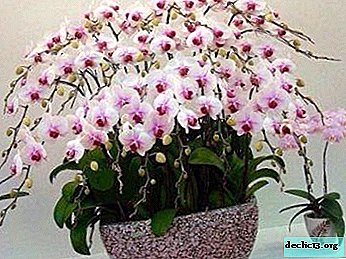 from the availability of knowledge, it will be most correct to first familiarize yourself with the recommendations for caring for the Orchid, and then already acquire this exotic plant;
from the availability of knowledge, it will be most correct to first familiarize yourself with the recommendations for caring for the Orchid, and then already acquire this exotic plant;- strict adherence to all tips for creating the necessary conditions for the successful cultivation of a flowering plant;
- from the ability and desire to create all these necessary conditions, to comply with the requirements for illumination, air humidity, watering, temperature conditions.
With good competent care, the Orchid will long delight you with a magnificent color.
Pollination process
Under natural conditions, in the process of pollination of Orchids, the main role belongs to the wind, while at home it is more difficult to do this, but perhaps you just need to be patient. Pollination of a flower is performed as follows:
- using tweezers, carefully remove the pollinia (lumps of pollen) near the upper sepal;
- clean from the shell;
- drop in a small recess at the bottom of the flower column.
The pollen will stick and the ovary will begin to form, it will gradually grow (up to 10 cm), all this lasts about 5 months, then the seeds can be sown (preferably directly from the box).
What affects the duration of the process?
Of course, everyone wants the chic flowering of their beloved Orchid to last as long as possible. But you don’t need to do anything supernatural for this, you just need to take care and follow the rules for caring for her during this period. Basic rules for orchid care:
- provide intense lighting (diffused);
- water abundantly under a warm shower (water temperature about 35 degrees);
- do not transplant (may drop buds);
- feed, but in moderation - do not overfeed;
- provide the necessary humidity;
- it is very important - do not rearrange the Orchid from place to place, do not move or deploy the other side to the sun.
Well, if someone needs to shorten the flowering period, then act on the contrary. To reduce the flowering period of orchids you need:
- if you rearrange the plant to another window - it will drop flowers and buds (the same thing can happen when transplanting);
- dry air also does not allow full bloom - the period will be minimal;
- if you feed too actively, then this will also affect the flowering process.
Read more about how long the flowering period lasts and how often this happens at home, read here.
Possible problems
Orchid is a very delicate plant (especially flowering), and even with the most caring care, unfortunately, some problems may appear. The main problems with orchid:
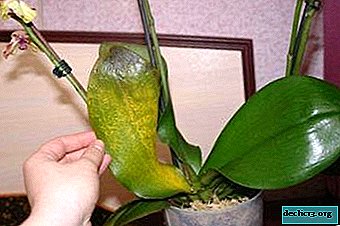 buds fade - the reason may be in too low air temperature or the plant has changed its place of residence;
buds fade - the reason may be in too low air temperature or the plant has changed its place of residence;- dark spots appeared on the flowers - this is possible if large amounts of water get in during irrigation, water should only wash the leaves;
- brown rot - appears when the Orchids are very waterlogged, you need to immediately take measures to save time - cut off all damaged areas and process the cuts with charcoal;
- gray rot - this is a fungal disease, urgently need to treat the whole plant with a fungicide;
- harmful insect attack, the most common - scale insects, spider mites, mealybugs - will need to be treated with Actellik or Fitoverm.
If your pet does not bloom and you do not know what to do in this situation, then we described all the possible problems and their solutions in this material.
What will happen if the conditions are not met?
Violation of the conditions implies not providing important conditions for the proper growth and development of the Orchid:
- glaze;
- subcortex;
- air humidity;
- illumination;
- temperature condition;
- location.
Conclusion
What can be summed up - a blooming Orchid is undoubtedly demanding in care. Failure to comply with the rules of orchid maintenance can even lead to the death of the entire plant. Not to mention the fact that it may simply not bloom. But the very process of caring for such an exotic plant can already be a pleasure. And with proper care, the goal will be achieved - the lush flowering of Orchids will last as long as possible.

 place for it should be on a bright windowsill (better western or eastern windows);
place for it should be on a bright windowsill (better western or eastern windows); from the availability of knowledge, it will be most correct to first familiarize yourself with the recommendations for caring for the Orchid, and then already acquire this exotic plant;
from the availability of knowledge, it will be most correct to first familiarize yourself with the recommendations for caring for the Orchid, and then already acquire this exotic plant; buds fade - the reason may be in too low air temperature or the plant has changed its place of residence;
buds fade - the reason may be in too low air temperature or the plant has changed its place of residence;




